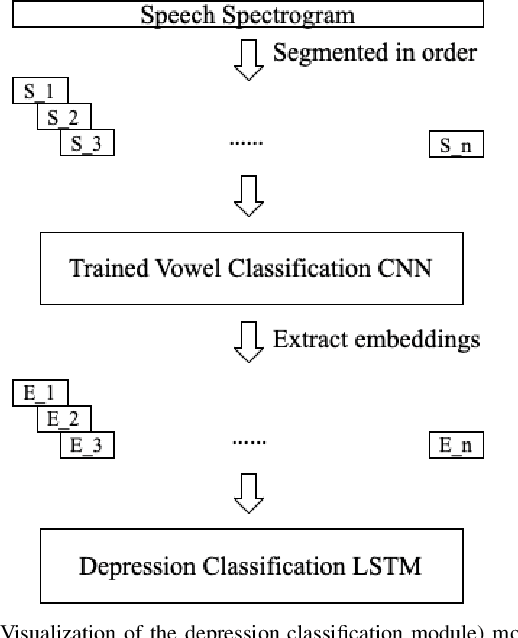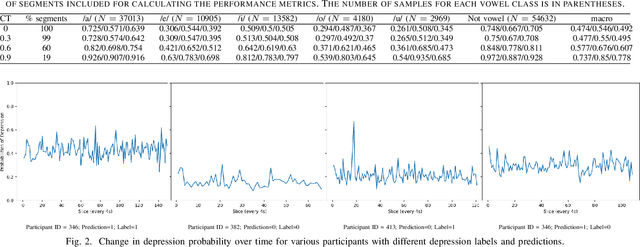Toward Knowledge-Driven Speech-Based Models of Depression: Leveraging Spectrotemporal Variations in Speech Vowels
Paper and Code
Oct 05, 2022



Psychomotor retardation associated with depression has been linked with tangible differences in vowel production. This paper investigates a knowledge-driven machine learning (ML) method that integrates spectrotemporal information of speech at the vowel-level to identify the depression. Low-level speech descriptors are learned by a convolutional neural network (CNN) that is trained for vowel classification. The temporal evolution of those low-level descriptors is modeled at the high-level within and across utterances via a long short-term memory (LSTM) model that takes the final depression decision. A modified version of the Local Interpretable Model-agnostic Explanations (LIME) is further used to identify the impact of the low-level spectrotemporal vowel variation on the decisions and observe the high-level temporal change of the depression likelihood. The proposed method outperforms baselines that model the spectrotemporal information in speech without integrating the vowel-based information, as well as ML models trained with conventional prosodic and spectrotemporal features. The conducted explainability analysis indicates that spectrotemporal information corresponding to non-vowel segments less important than the vowel-based information. Explainability of the high-level information capturing the segment-by-segment decisions is further inspected for participants with and without depression. The findings from this work can provide the foundation toward knowledge-driven interpretable decision-support systems that can assist clinicians to better understand fine-grain temporal changes in speech data, ultimately augmenting mental health diagnosis and care.
 Add to Chrome
Add to Chrome Add to Firefox
Add to Firefox Add to Edge
Add to Edge